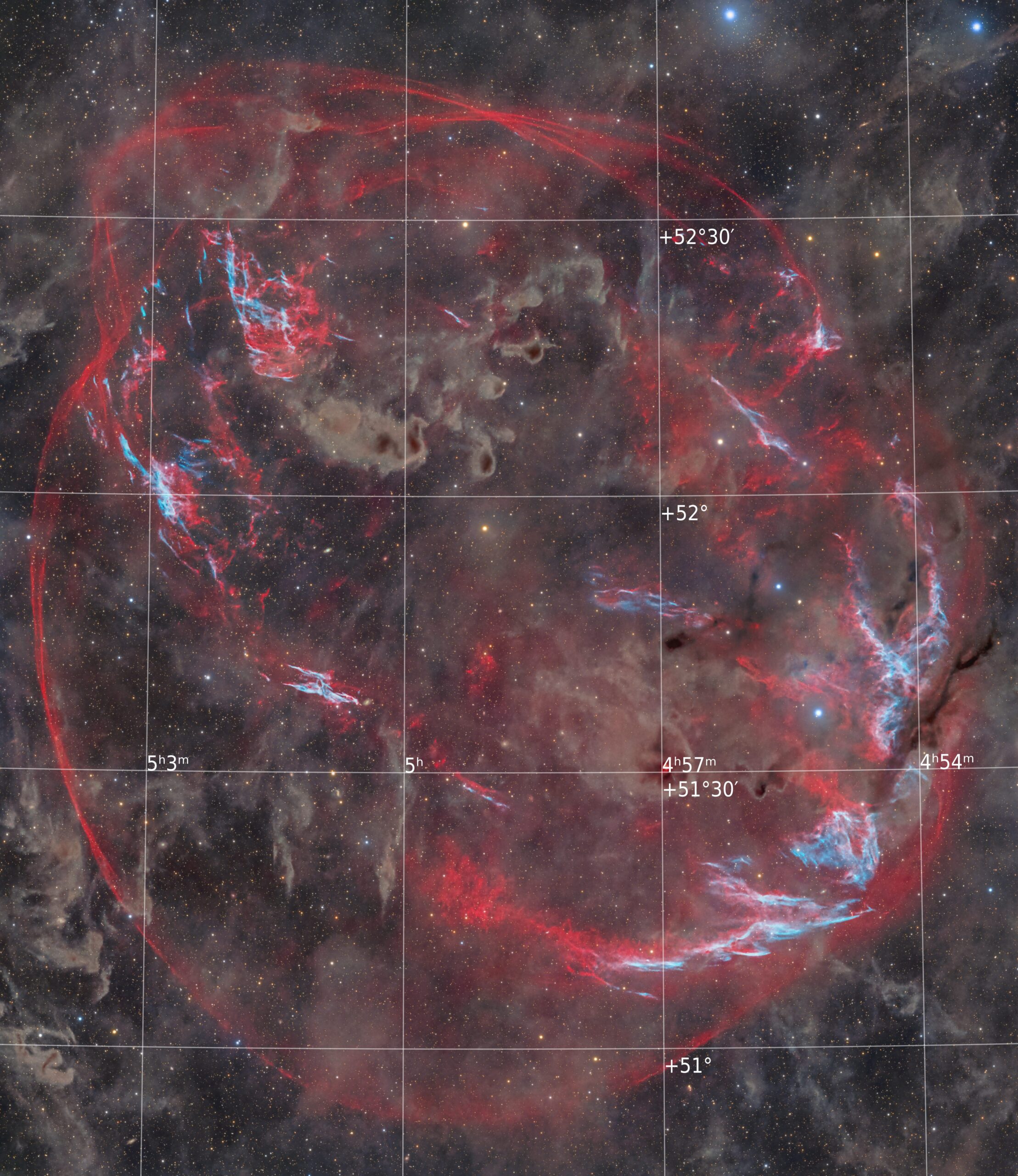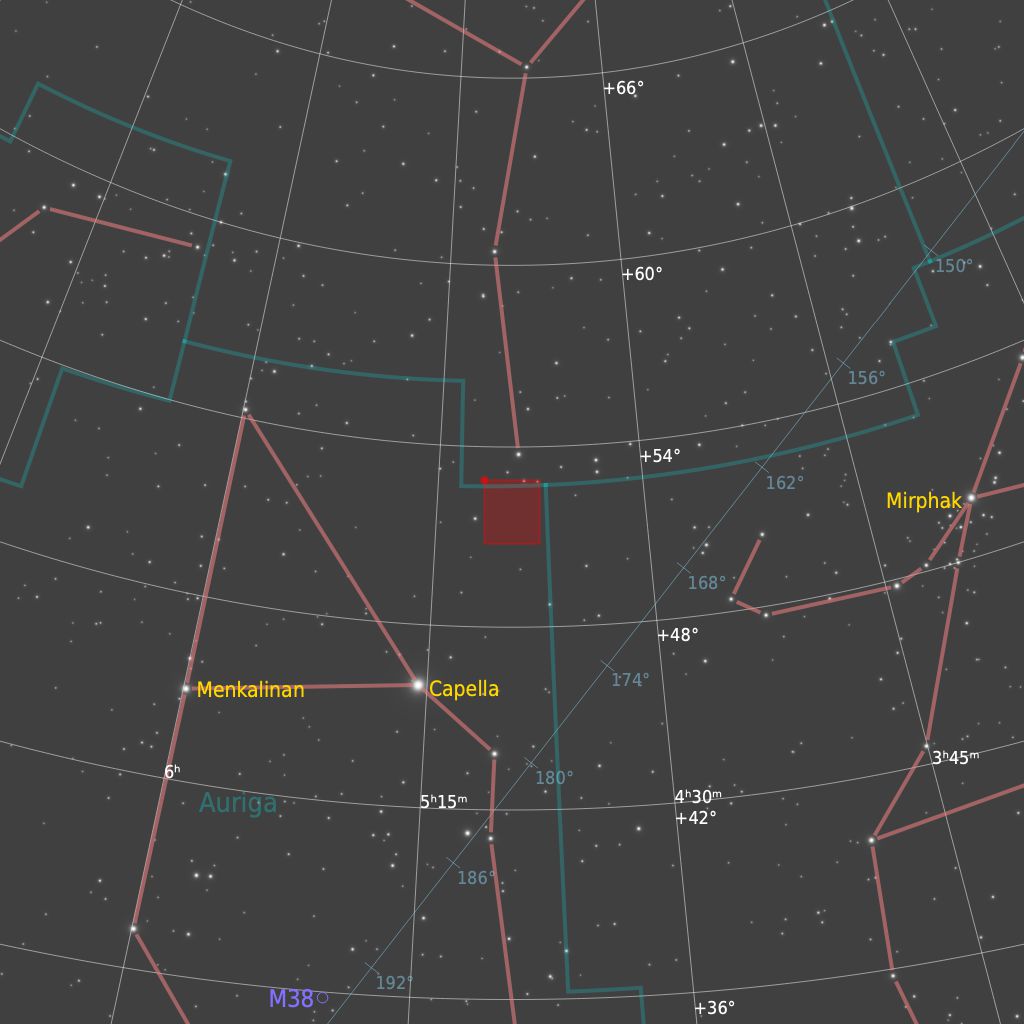Supernova Remnant G156.2+5.7: A Rare Glimpse of a Faint Giant
I’m excited to share our Deep Sky Collective (DSC) image of Supernova Remnant G156.2+5.7 (SNR156), a rarely photographed SNR in the constellation Auriga. Estimated to be about 10,000 years old and located some 5,500 light-years away, this remnant spans a staggering 200 light-years across. It is exceptionally faint in optical wavelengths, making it a challenging yet rewarding target for our collaborative team.
The Making of This Mosaic
We collected data for four months, followed by two months of pre- and post-processing, ultimately achieving 385 hours 12 minutes of total integration. Because of the SNR’s large angular size, most contributors needed to image multiple panels—a tough undertaking for any project, made even more complex by our team-based collaboration. Despite the hurdles, we successfully revealed SNR156’s ghostly filaments of H-alpha and [O III], offering one of the clearest amateur views to date.
My Role (Steeve Body)
As the final editor, it was my job to integrate, refine, and balance the delicate emission structures in this faint remnant. Bringing out such subtle features demanded careful processing, noise control, and the alignment of multiple data panels into a cohesive mosaic.
Contributors and Special Thanks
- Tim Schaeffer – Coordinator
- Carl Björk (Stacker)
- Steeve Body (Editor)
- Sébastian Brizé
- Antoine and Dalia Grelin – https://www.galactic-hunter.com
- Bray Falls
- Florent Herrbach
- James M
- Justin P.
- Kevin Trillsam
- Jens Unger
Special Thanks:
Carl for stacking all the data and offering his NAS for easier file sharing, plus stitching the mosaic to perfection. His own final edit can be seen as Revision C.
Bray for providing the crucial MSGR references that greatly improved gradient reduction.
A Supernova’s Legacy
The Explosive End of a Massive Star
SNR156 began when a star over 8 solar masses ran out of nuclear fuel, collapsed at velocities approaching 30% the speed of light, and rebounded as an immense shockwave. This event enriched the interstellar medium (ISM) with heavy elements—key building blocks for future stars and planets.
Optical Emissions (H-alpha & [O III])
Though SNR156 is brightest in X-ray wavelengths and also faintly visible in radio, capturing it in the optical band is especially challenging. Our combined Ha and [O III] filters reveal the remnant’s elusive emission filaments, which trace the shock front as it interacts with the surrounding ISM. Such features typically remain visible for around 20,000–30,000 years before dispersing completely into the cosmic landscape.
Age and Distance
Recent studies estimate SNR156 to be about 10,000 years old at a distance of ~5,500 light-years, based on its expansion rate of ~0.06 arcseconds/year. This speed was used alongside models of shock velocity to arrive at current age and distance estimates.
Explore the Full-Resolution Image
Curious to see more? Zoom in on the 5,629 × 6,500 px mosaic at our DSC gallery:
https://deepskycollective.com/gallery
There, you can dive into the faintest tendrils of ionised gas, spot subtle gradients, and appreciate the immense scale of this ancient stellar explosion.
•Featured on AAPOD2 (11 June 2024): https://www.aapod2.com/blog/dsc-snr-g156257


